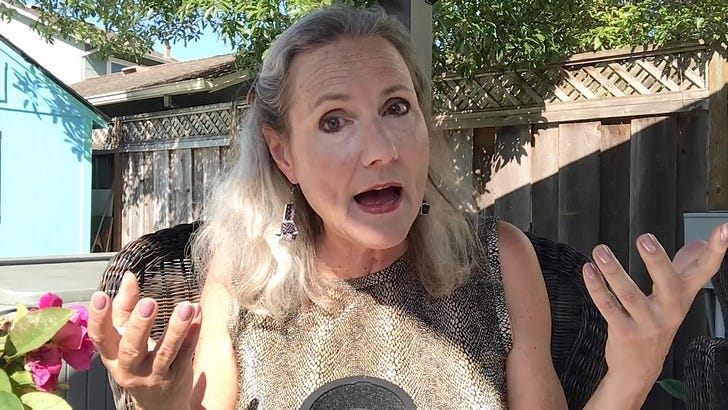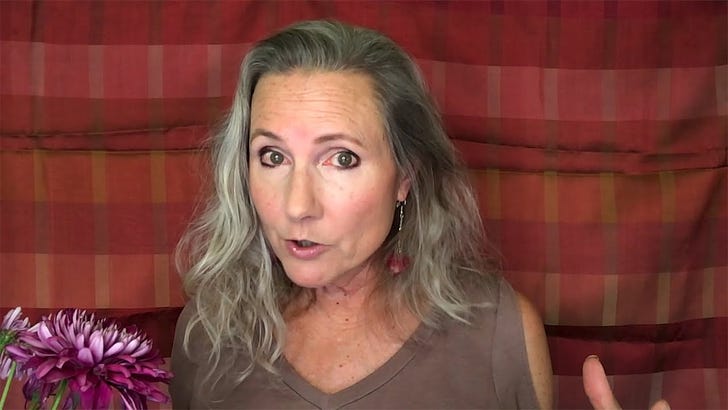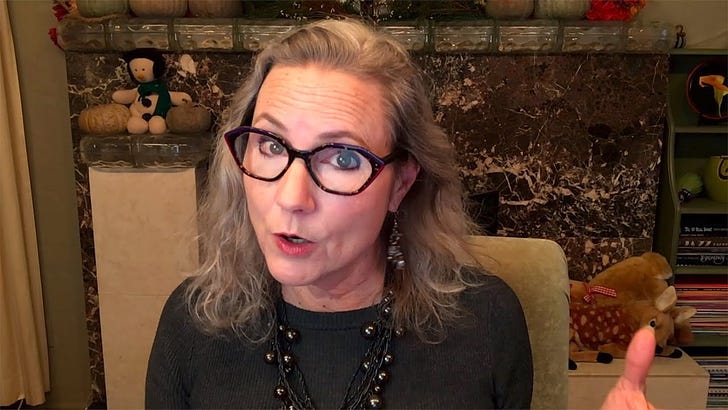The other day I woke to the delightful surprise that Mark Alexander had recommended my book on his Stack. More than recommended—issued a direct order!
And T Jacobsen, Peter, and Helene Belloni are also reading it. And Peter Breggin—who says I’m a good writer and funny! So that was a good reason to circle back to economics and mysticism. This combination may bring to mind Charles Eisenstein’s Sacred Economics and The More Beautiful World Our Hearts Know is Possible. And indeed, there are many overlaps between my thinking and Charles’ on economics and spirituality, as I explored in The Space Between Stories.
But this combination also harkens back to Rudolf Steiner and the Anthroposophical Society, who paid attention to the reality IN the world while questioning the reality OF the world—what I call socio-spirituality. It’s a powerful combination especially with a community backing it up.
In this video, I talk about the need to embrace our inner mystic and to see the mystic in each other. A poem I once wrote is called Mystic Currents, Current Mystics:
A mystic is a cartographer mapping the ocean floor from the surface ripples. We are all born prophets. To see the future is no more than seeing the present clearly. Expect prophecy within your own home. Listen closer. A moment lived in the awareness of death is a speck of infinity, exploding. The answer to the conundrum: to be fully human is to be fully divine.
I’ve been stressing that we need to love the people and challenge the ideas. There’s a common thread to all the ideas I challenge—whether it’s Judeo-Christianity or vegan/ vegetarianism. In all cases, it’s the belief that some people are morally or ethically superior to others.
To go full-on mystic, there are only two choices: we’re superior or we’re God; both are not possible. If we’re One with each other, then we might be One with God. But if we’re superior, we’re stuck as separate minds in separate bodies. So the cost of superiority is divinity.
In The Space Between Stories, I state my belief that we’re in a liminal time that’s neither here nor there, not the way things have been and not yet settled on what’s coming next. A limen is a threshold, and the “boundary of perception. On one side of a limen a stimulus is perceivable, on the other side it is not.”
It’s also related to limit. So we’re at the limit of one story and not yet to the limen where the new one comes into focus. The world is waiting like a bride to be carried over the threshold. It’s you who needs to write the homecoming into being on the other side.
I just finished The 10,000 Doors of January by Alix Harrow. It’s a marvelous read for the vocabulary alone. She uses obstreperous, one of my favorites, then conflagration. "Time, sitting on your breastbone like a black-scaled dragon, minutes clicking like claws across the floor, hours gliding past on sulferous wings." And "The hour-dragons stalked and circled. I heard their belly scales susurrating against the tile in my sleep." Susurrating! Spell-check doesn't even know it.
The concept is that there are doors that are portals between worlds, but the threshold requires falling into blackness and being sucked down. It requires faith that the next world is there in order to get to the other side. And words have power. There are wordworkers who do intricate tatoos and sew blessings onto sails. But the most powerful use their words and belief in them to create the Doors.
I believe that Spirit is the choreographer who creates the synchronicities that Charles E. talks about, the signs that the story is shifting, the glitch in the Matrix. But we, in our true Mind, are the ones who write the script making sense of them. We figure out how this story could end well.
We in our Right Mind, corresponding to the left hand or the Divine Feminine, are the intuition or Spirit that’s in communication with God. We in our Left Mind, corresponding to the right hand or the Divine Masculine, are the Christ Mind that’s aware we’re all One. The socio- part is masculine, the spiritu- is feminine.
What I do in How to Dismantle an Empire is give a vocabulary and a framework for building the Door to your world, the 10,000 villages of Gandhi, the commonwealth of your desires. No two worlds are alike but the tools are always the same.
In a chapter called World Without Ends, I look at how every community can be the center of the universe, with no one at the limit of one place to the next. Each grouping of people—from 30M to 2.5M to 200K to 17K to 1400 to 120—is honeycombed into six others on their borders.
What would be your hamlet of 1400, your village of 17,000, your commonwealth of 200,000? What would you name them? What functions would work best at different levels?
Think about the things that give you joy, the things you love, the passions you share with other people. How would you want to organize and incentivize these? As I talked about in Five Feminine Economies, one form of money doesn’t work for everything. How would you design a different type of currency for these functions?
Economics is neither dismal nor a science, it’s an art, a religion, a math game. To see it as distributing scarce resources is to think like a consumer. The real question is how to enable communities to organize their own labor and resources for their own benefit. As Charles E. says, it’s designing “the more beautiful world our hearts know is possible.”
As long as we’re afraid of the shift, I don’t think the new world will come into being. We have to develop a vision of what we want that’s so real we can taste it. It’s up to us how long this inbetween time will last. When we can see the other side in our imagination, then we’ll be brave enough to cross the threshold.
Bonus Quote:
Review of Cities & the Wealth of Nations by Jane Jacobs:
Our breathing rate is regulated through a feedback mechanism. Too much carbon dioxide in the blood, or too little oxygen, and the brain stem commands the diaphragm to accelerate breathing. Once the levels are back to normal, the brain stem receives this feedback and slows breathing down again.
Now, Jacobs asks, imagine an impossible creature: ten people, all doing their own thing, but whose breathing is somehow regulated by a single brain stem. The feedback the brain stem receives is a consolidated average of everyone’s carbon dioxide and oxygen levels, and the breathing rate the stem decides on is applied to all ten people, regardless of whether they’re sleeping or playing tennis.
This, to put it mildly, wouldn’t work.
This creature is an analogy, representing a nation. The ten people are its individual cities, and the breathing rate is the cities’ economies. If it sounds like a stupid analogy, that’s because it is: “I have had to propose a preposterous situation,” writes Jacobs, “because systems as structurally flawed as this don’t exist in nature; they wouldn’t last.” Nor do they exist in machines we design; they wouldn’t work. But “nations, from this point of view, don’t work either, yet do exist.”
The feedback mechanism that fails to work properly in a nation is currency. A currency always fluctuates according to the exports and imports of the area where it circulates.
From Astral Codex Ten on Jane Jacob’s Cities and the Wealth of Nations:
For more on Rudolf Steiner and Mystic Currents, here’s Tonic Gnostic:
Luc Koch weighs in on Tonic Masculinity, What Is a Woman?, Extrasensory Perception, Gnostic liberation, Red-Pilled in Disneyland, and the nature of good and evil. Rudolf Steiner appears in two places at once; David Graeber argues with Lobaczewski on whether psychopaths are made or born.
On the power of words, this is When Words Die, Worlds Die:
Sticks and stones may break bones but words kill the imagination. In this episode, I cite Paul Hawken's book, Blessed Unrest, in a chapter called Indogene that talks about the language of the Yamana people, who Darwin thought the lowest form of humanity. I dissect an FDA campaign that uses colloquialism to ridicule. A critique of Mattias Desmet on Unlimited Hangout looks at the sanitizing language that neutralizes atrocity. And Glenn Greenwald looks at how atrocity is used to ban the use of words.







Dr Zelenko's hope at the end of the documentary Never Again Is Now Global.
https://www.bitchute.com/video/i2LMRku3i3JA/
You are surely correct when you say we must re-envision the world and reinvent ourselves. Together reinventing our communities and families. Any barriers between our individual selves and our human and ecological interdependence will need to be jettisoned. The technological world we have fashioned will have to be dismantled. We will finally be forced to understand who we are as humans within the universe.